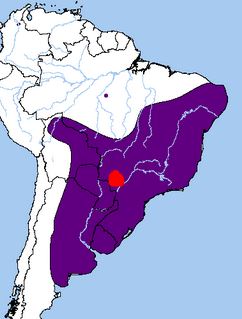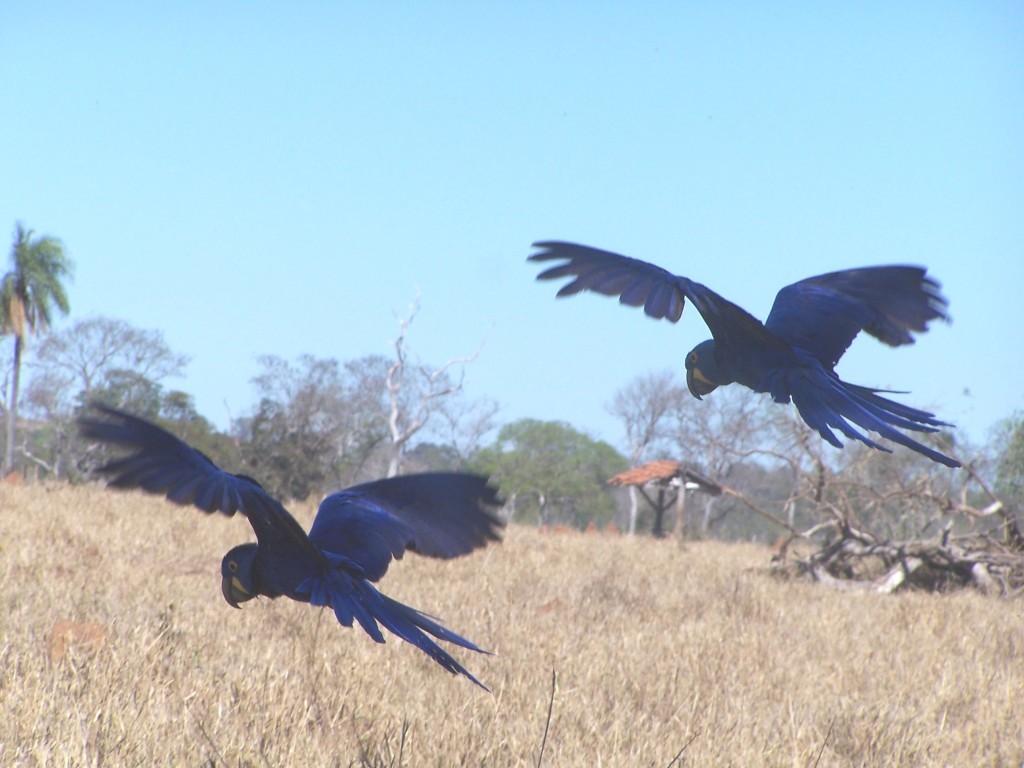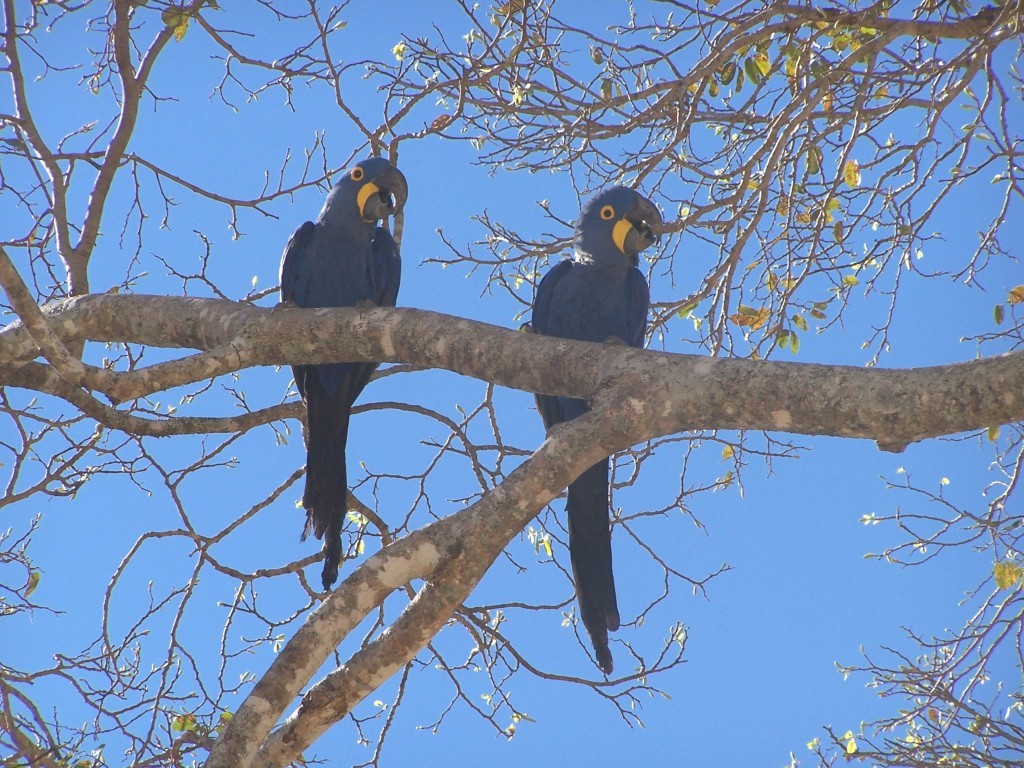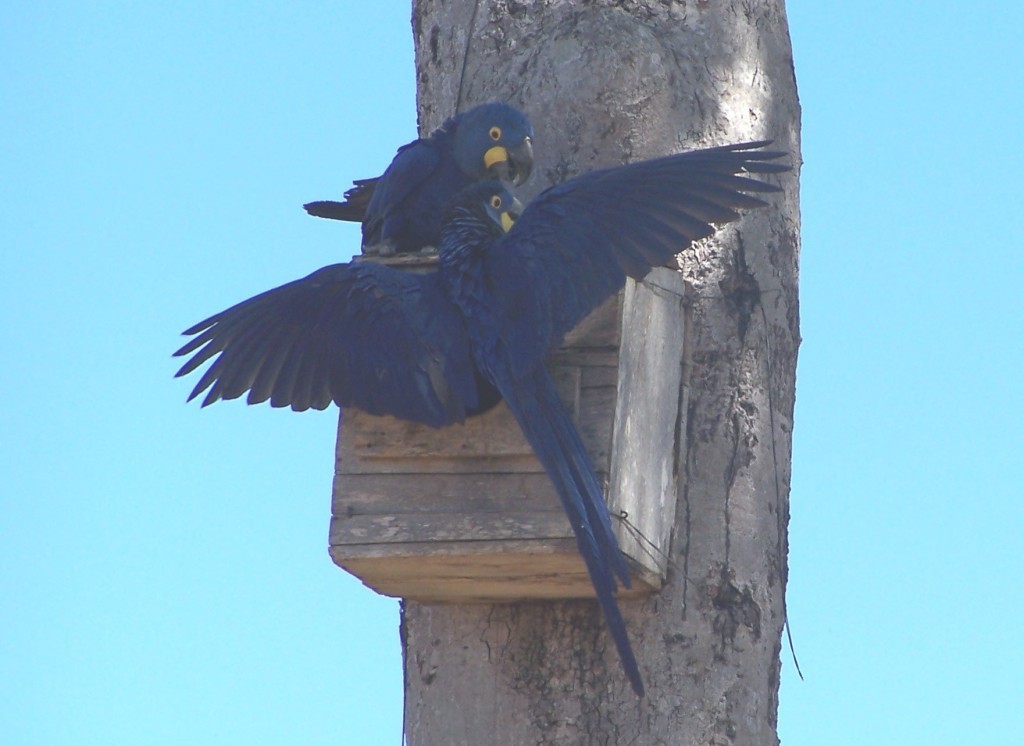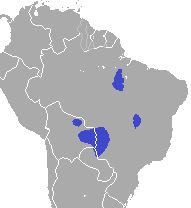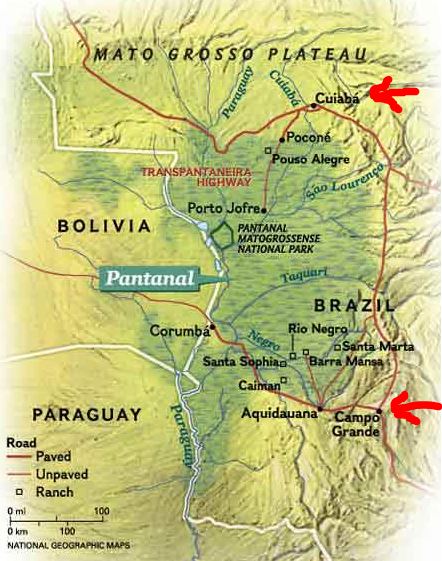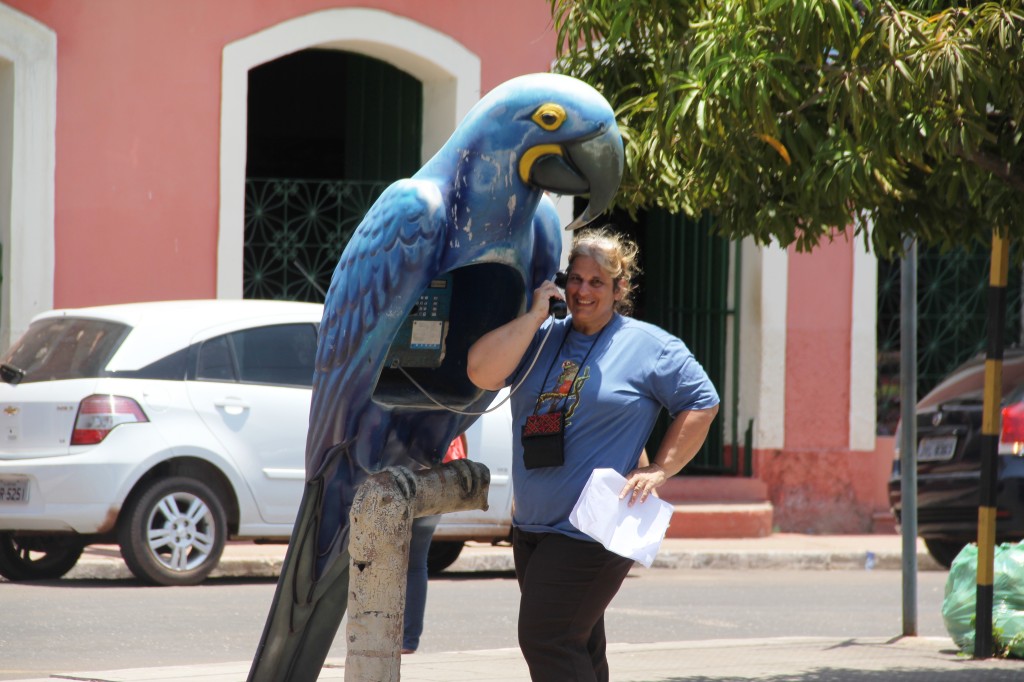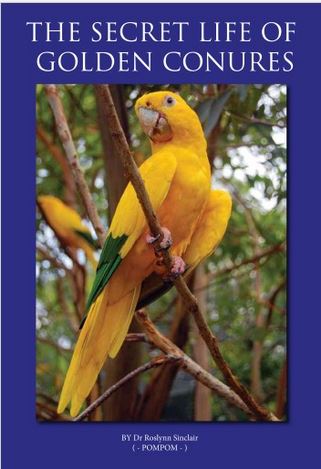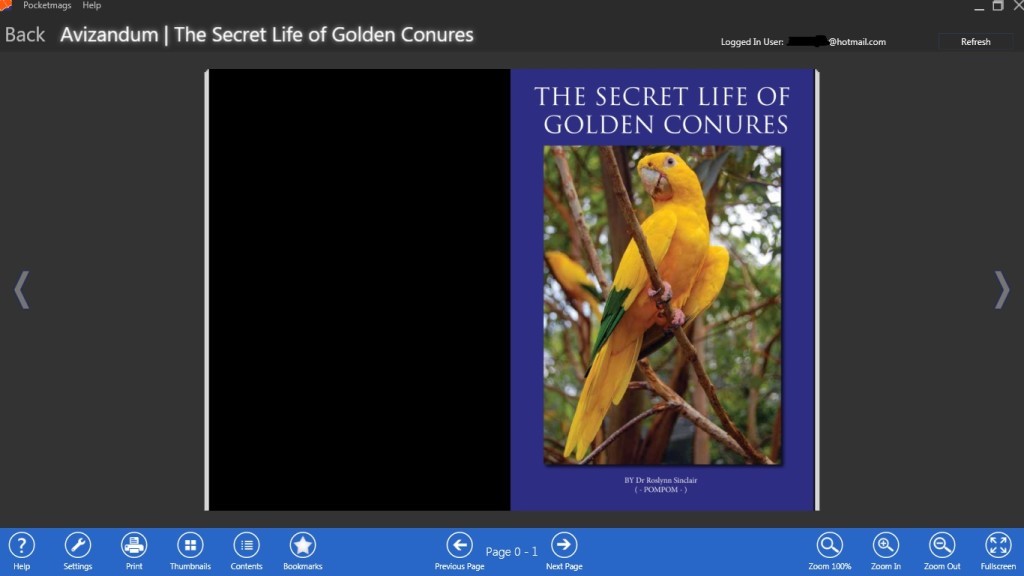*Originally published on Feathered and Free. These historical reviews are gradually being merged to MTTW.
The Pantanal region of Brazil is one of the “holy grails” of any parrot lover or bird watcher. This vast wetland wilderness is home to the rare Hyacinth Macaw as well as some commonly found species such as Nanday Conures, Amazons, Quakers and Maximilian Pionus. I began researching two years in advance on the internet to insure we would have the best possible experience. I like to give preference to ecotourism projects that benefit endangered species and provide employment opportunities to locals who might otherwise have engaged in the heinous practice of poaching. After careful consideration, I chose the Refugio Ecologico Caiman because it is home to the Projeto Arara Azul founded by Neiva Guedes. This project has been instrumental in bringing back the Hyacinth Macaw from near extinction and studying their breeding habits. The project has succeeded in bringing the population of Hyacinth Macaws from 1500 to 6000! Since 2007, small groups can arrange to accompany the volunteers of the project on their daily activities and studies.
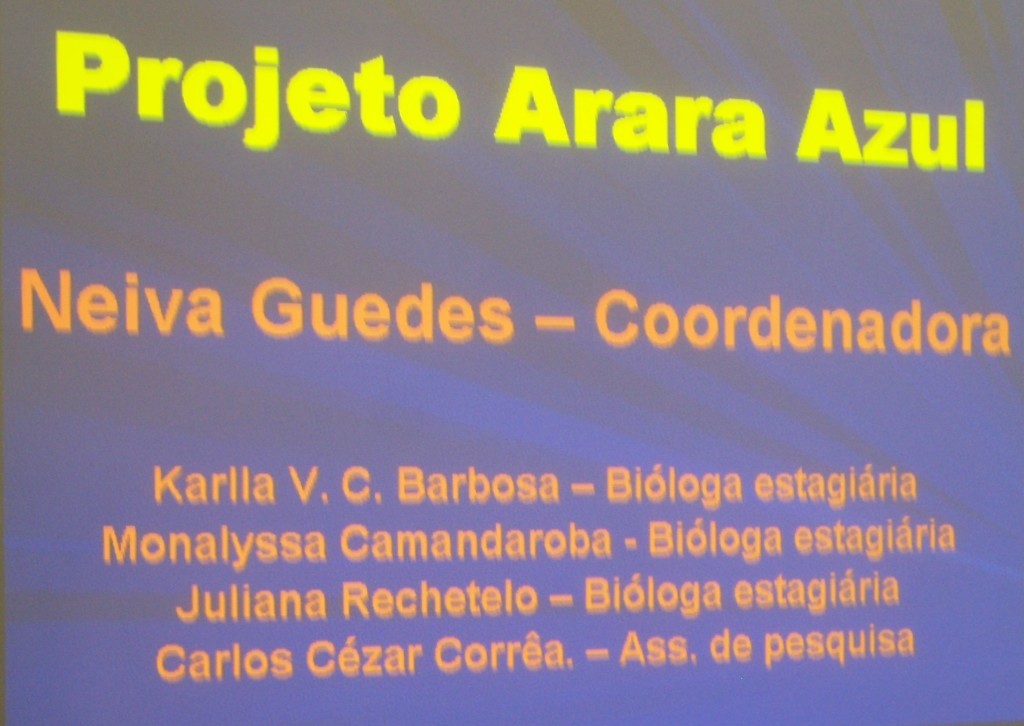
I arranged our package through Open Door Tur which is a reliable tour operator based in Campo Grande, Brazil. Campo Grande is the gateway to the Pantanal and is accessed by plane from Sao Paulo or by bus from many Brazilian cities. We took the comfortable overnight bus from Foz do Iguacu and spent one day in Campo Grande to rest up before our big adventure.
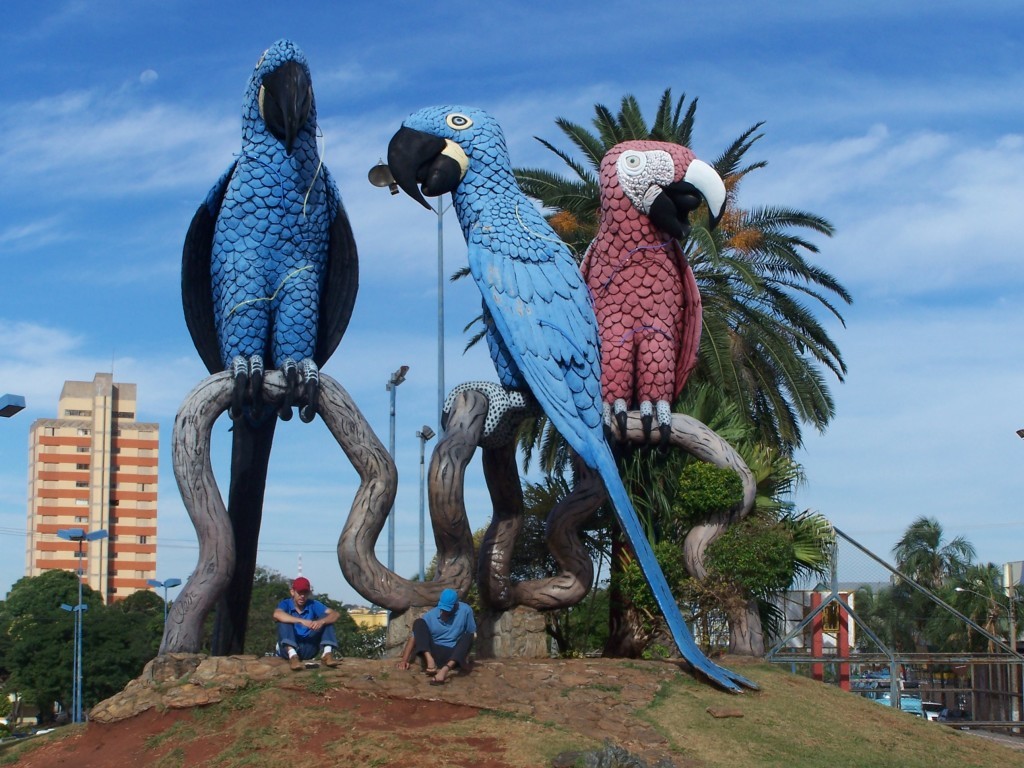
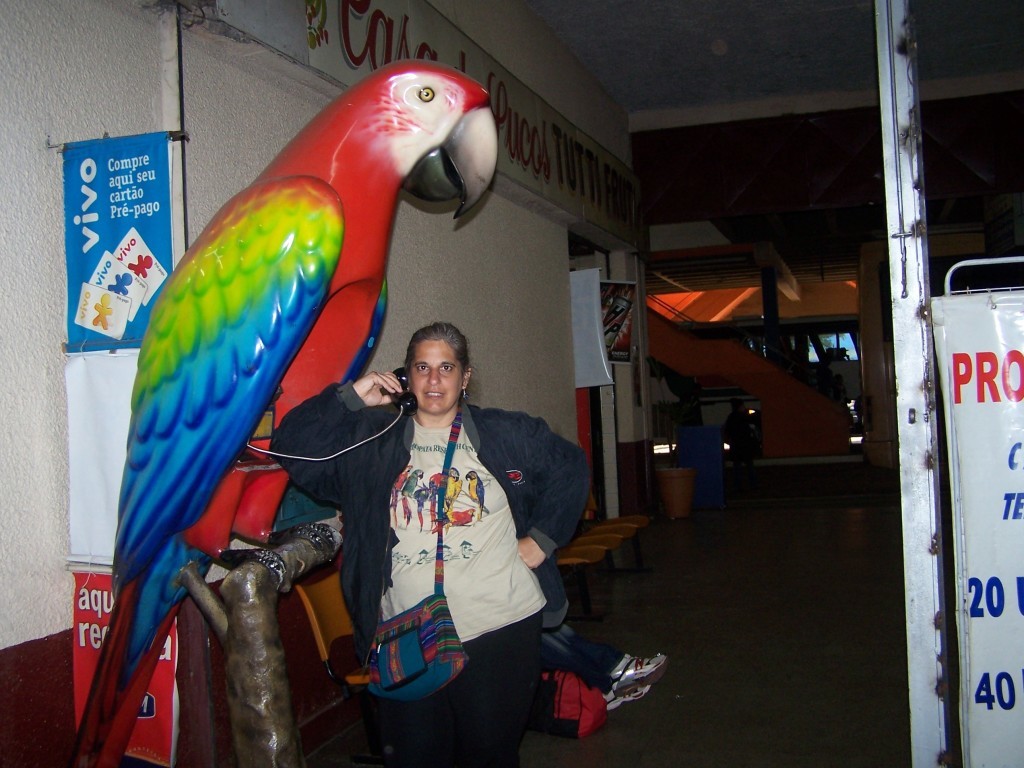
Sylvia from Open Door Tur picked us up at our hotel and took us on the 3.5 hour drive to Refugio Ecologico Caiman.
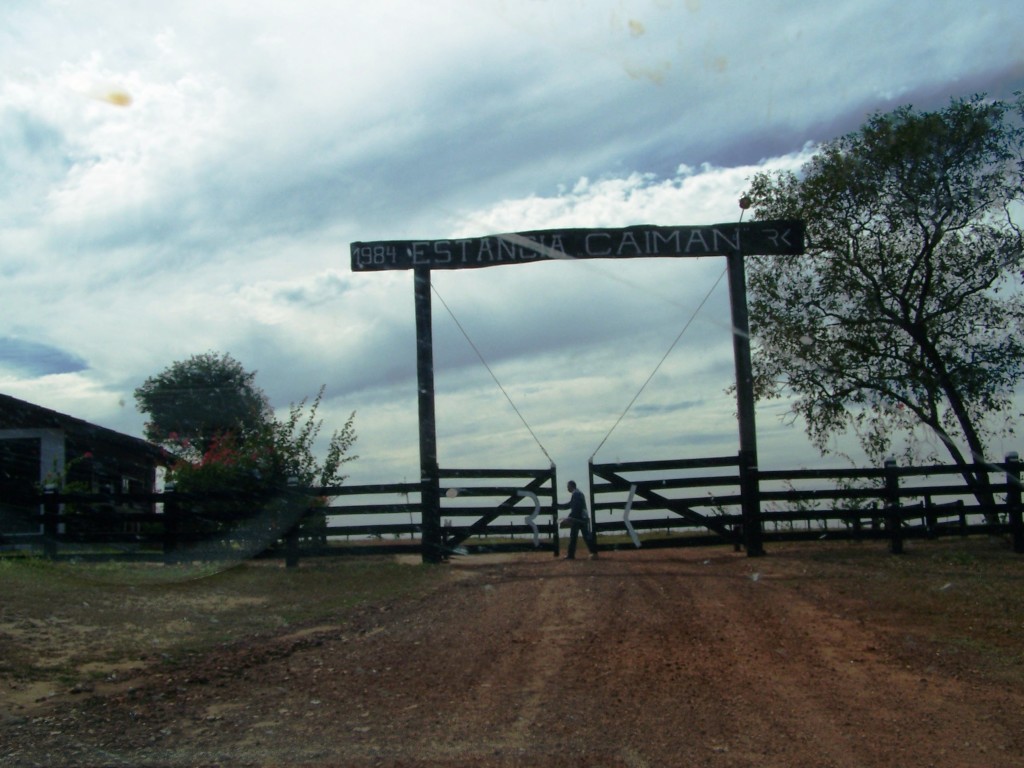
We were met on arrival by the staff and immediately shown to a room near the swimming pool at Sede Lodge.
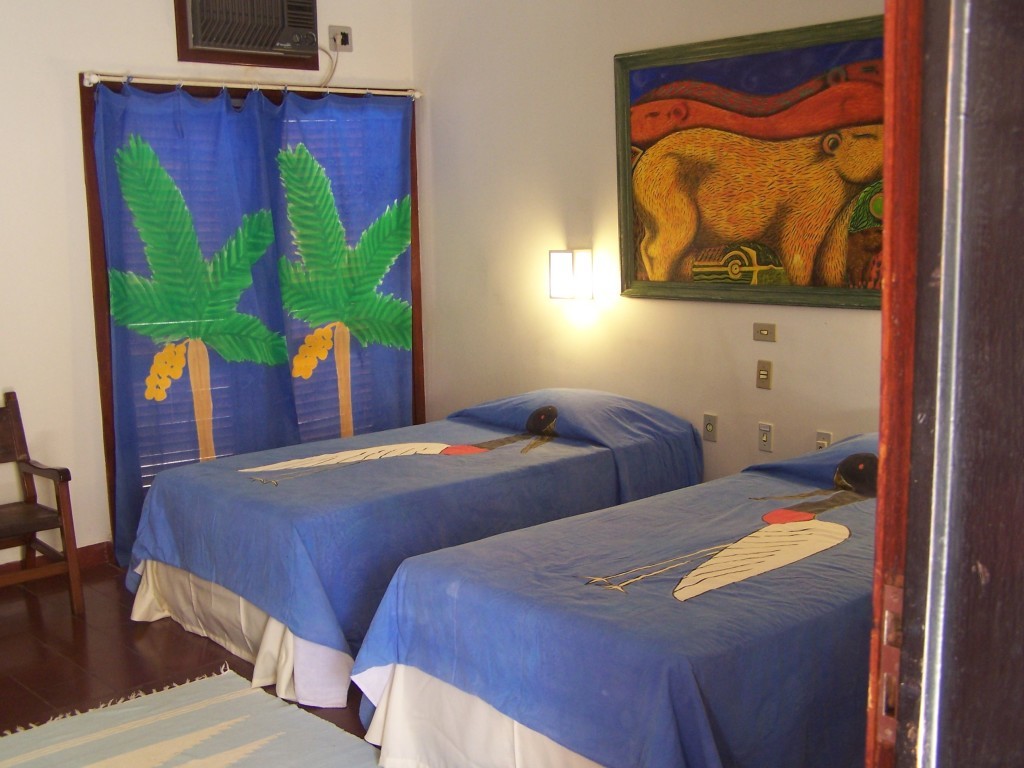
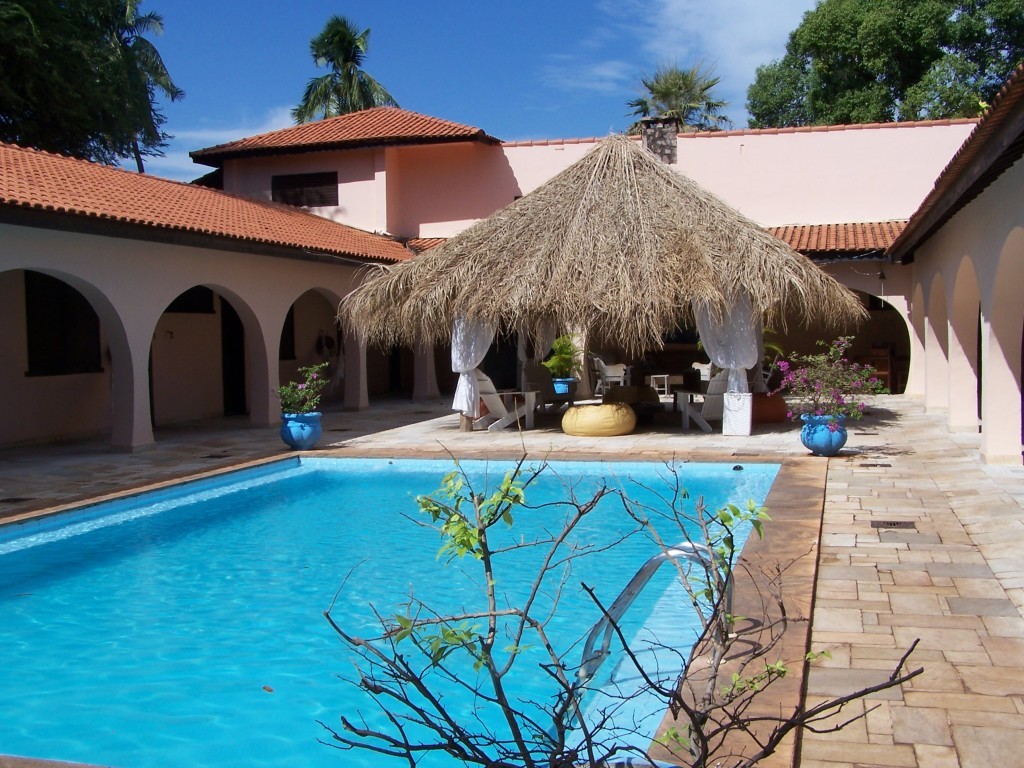
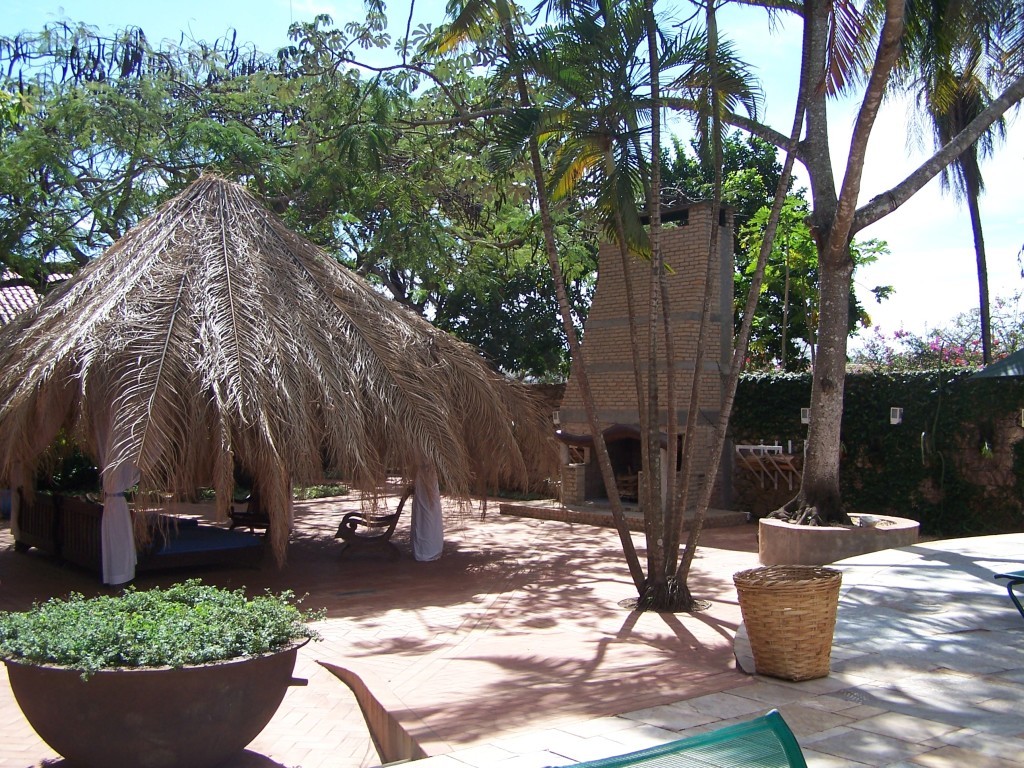
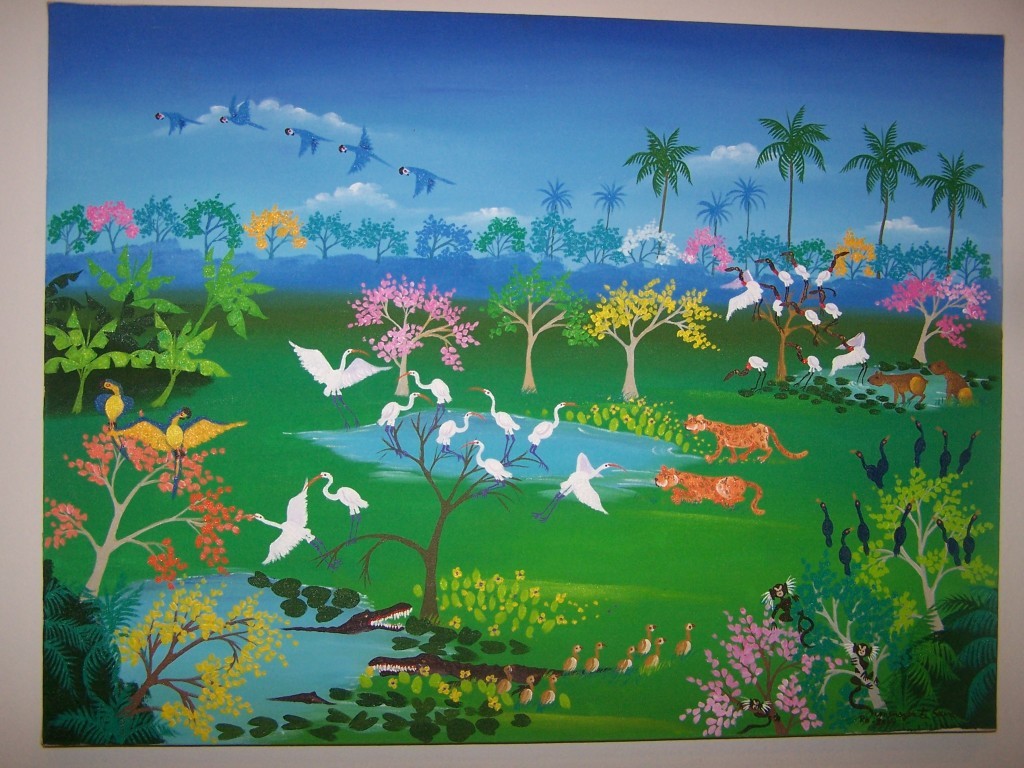
Everyone was very friendly and they explained about the board with the tours and activities. They divide everyone into two groups-yellow (English) and blue (Portuguese). A buffet lunch was served at noon and then we discovered that so far, we were the only tourists to arrive in our yellow group.
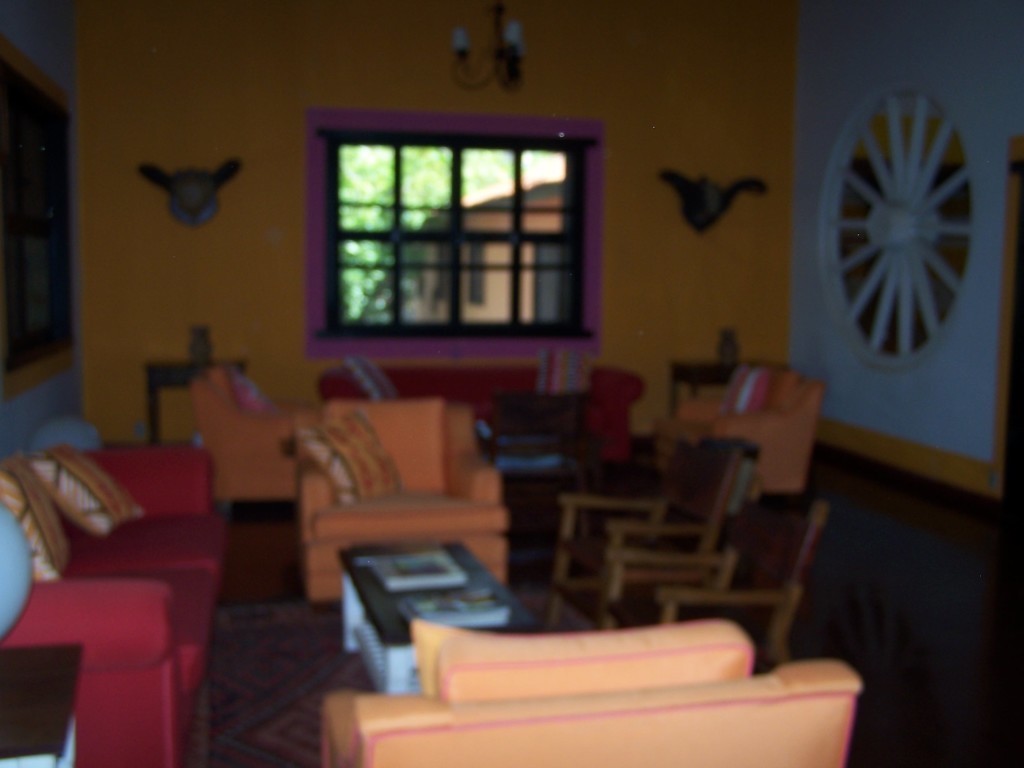
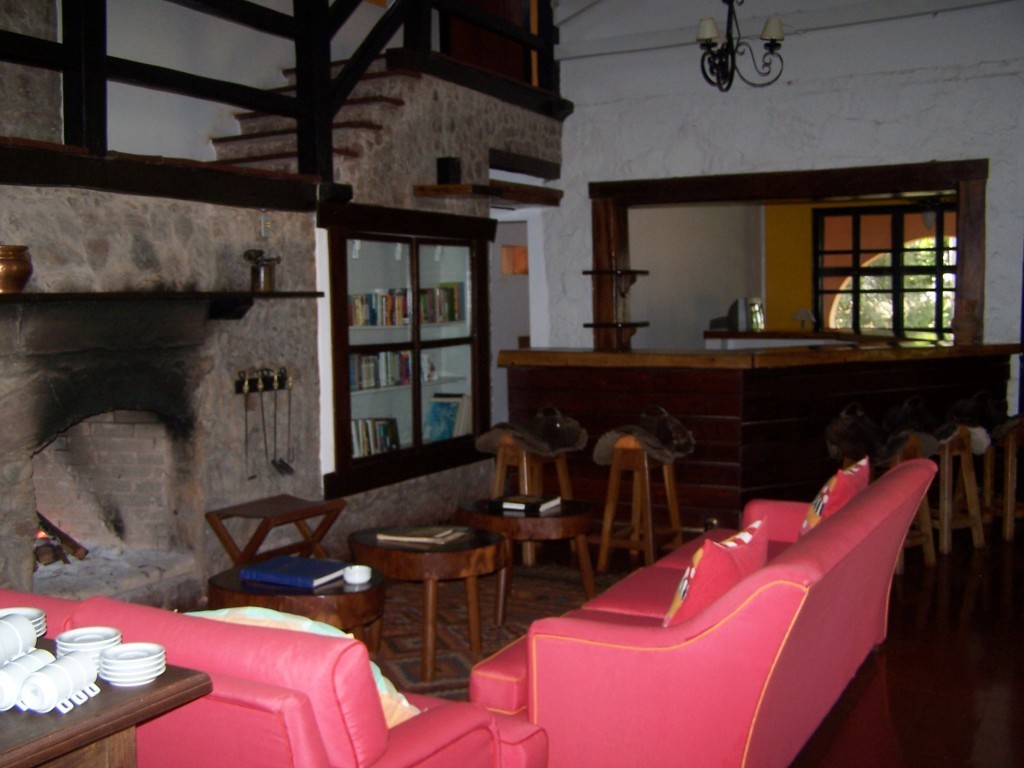
The flights were still chaotic and everyone else was delayed. While resting after lunch, I heard the distinctive Macaw squawk and ran out into the garden to see two Hyacinth Macaws munching on nuts in a palm tree right there in the hotel garden! Not even on a tour and already seeing Hyacinths!!!
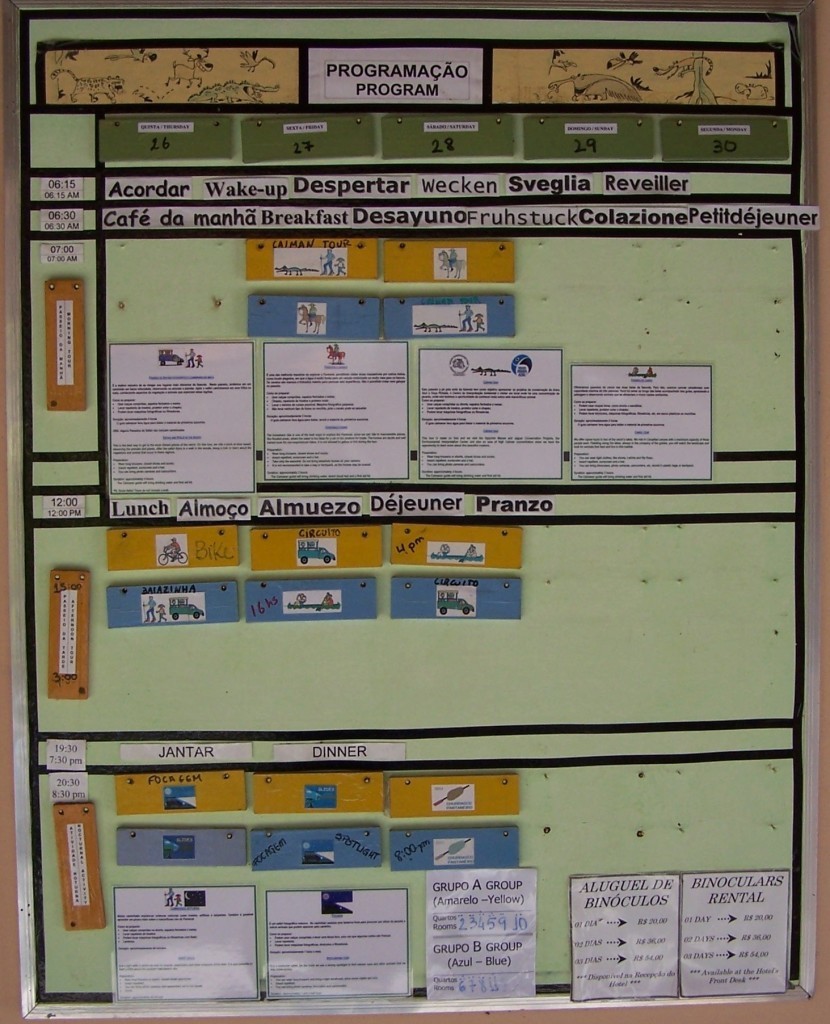
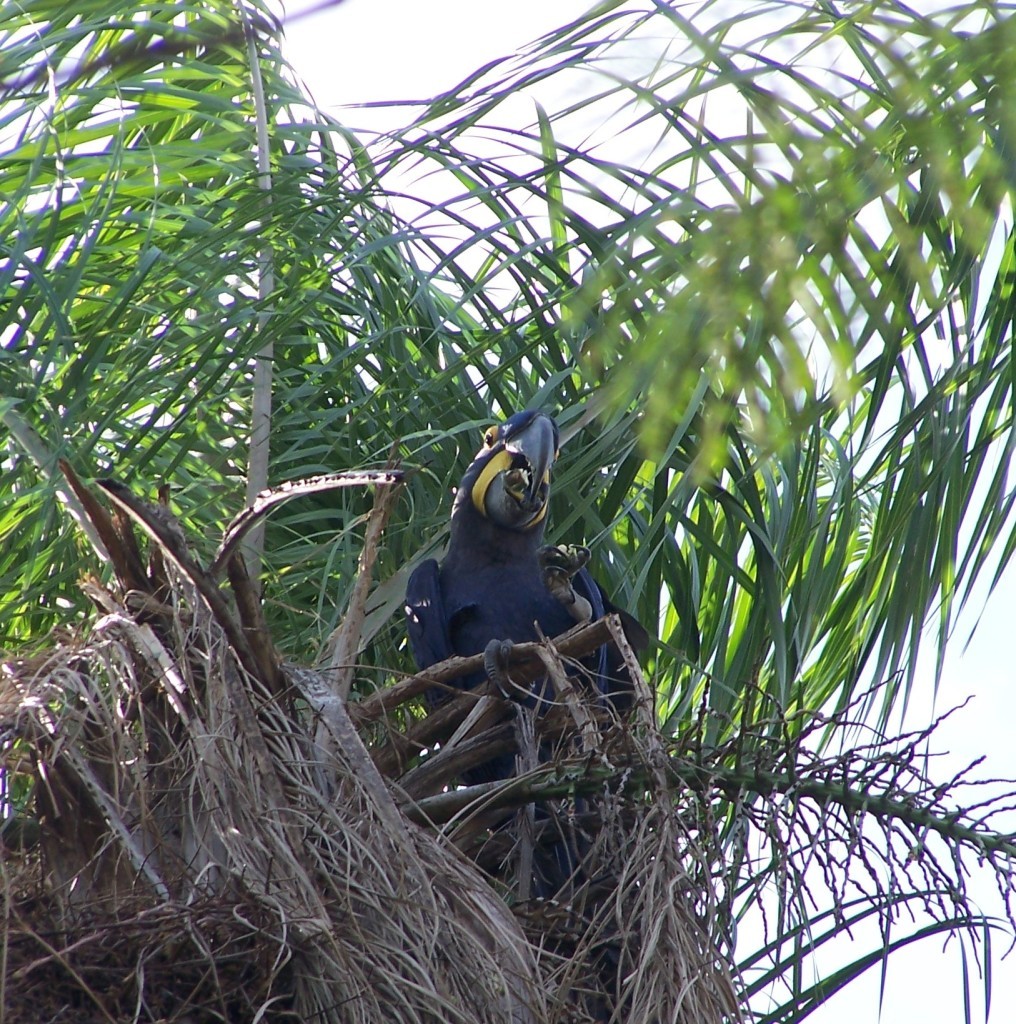
The afternoon activity was the bike ride and it was only us and the guide, two other guides went along just for the fun of it, nothing else to do. Rheas which look like ostritches were on the grounds.
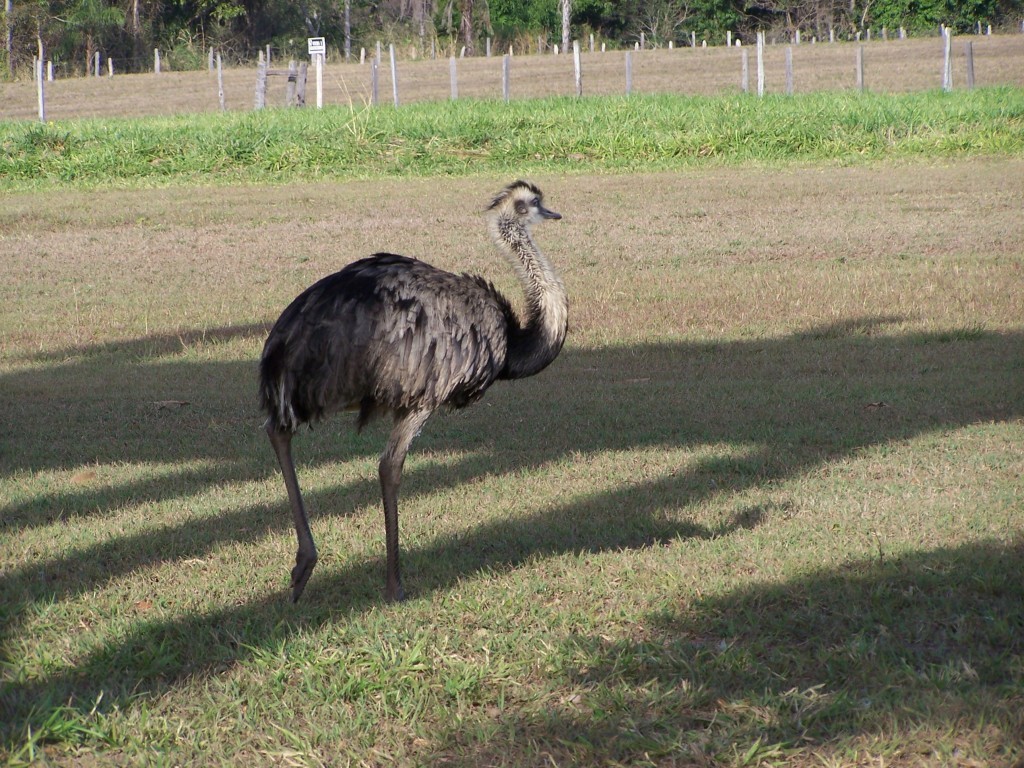
We had barely gotten out the gate when we saw about 7 or 8 Hyacinths flying around so I leapt off the bike to grab pics.
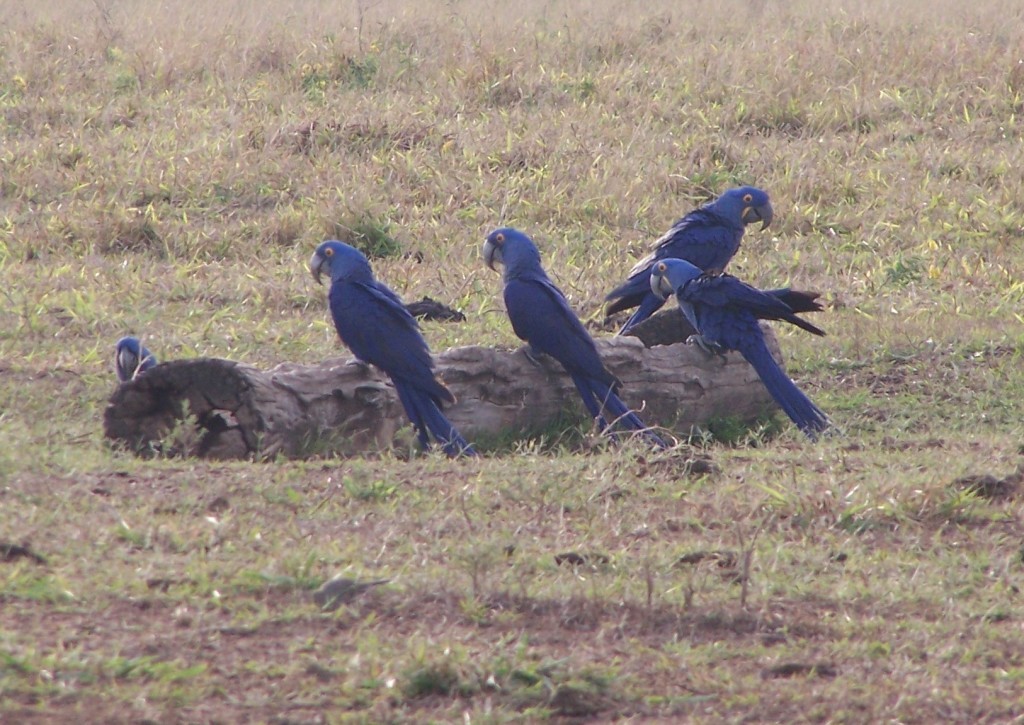
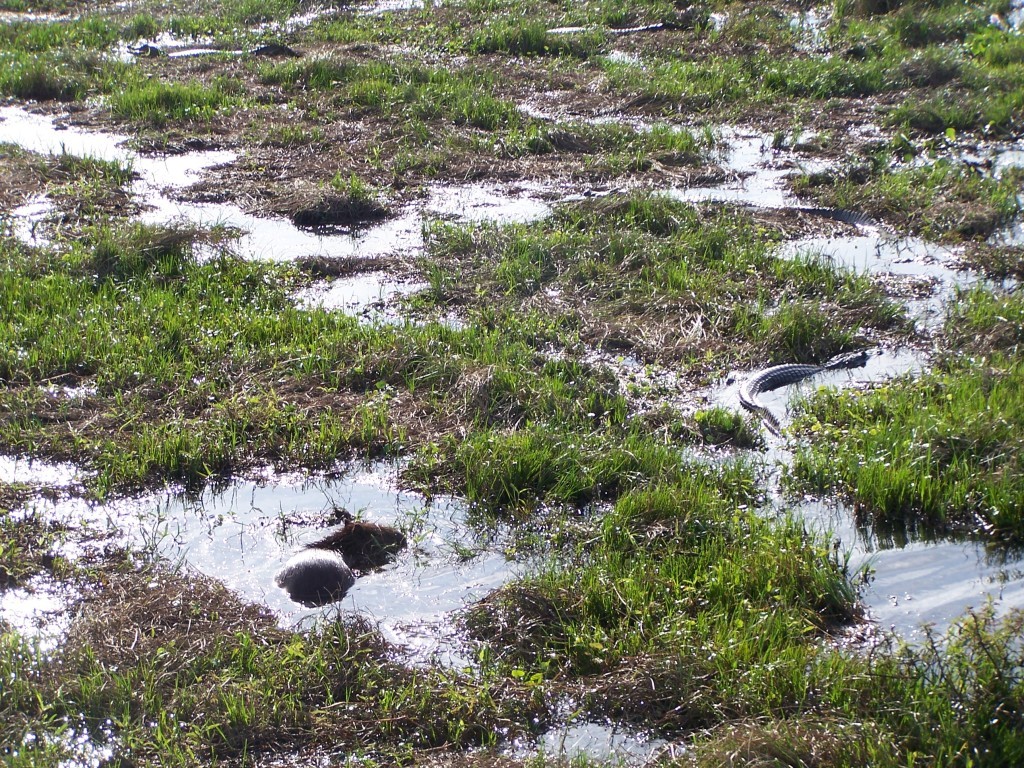
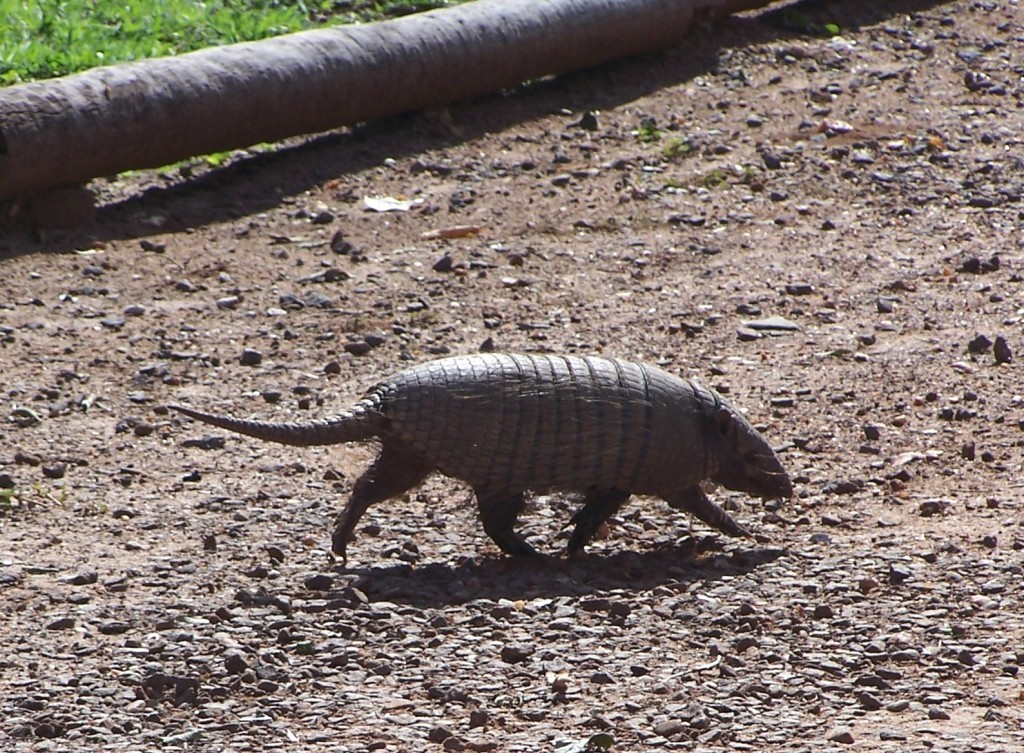
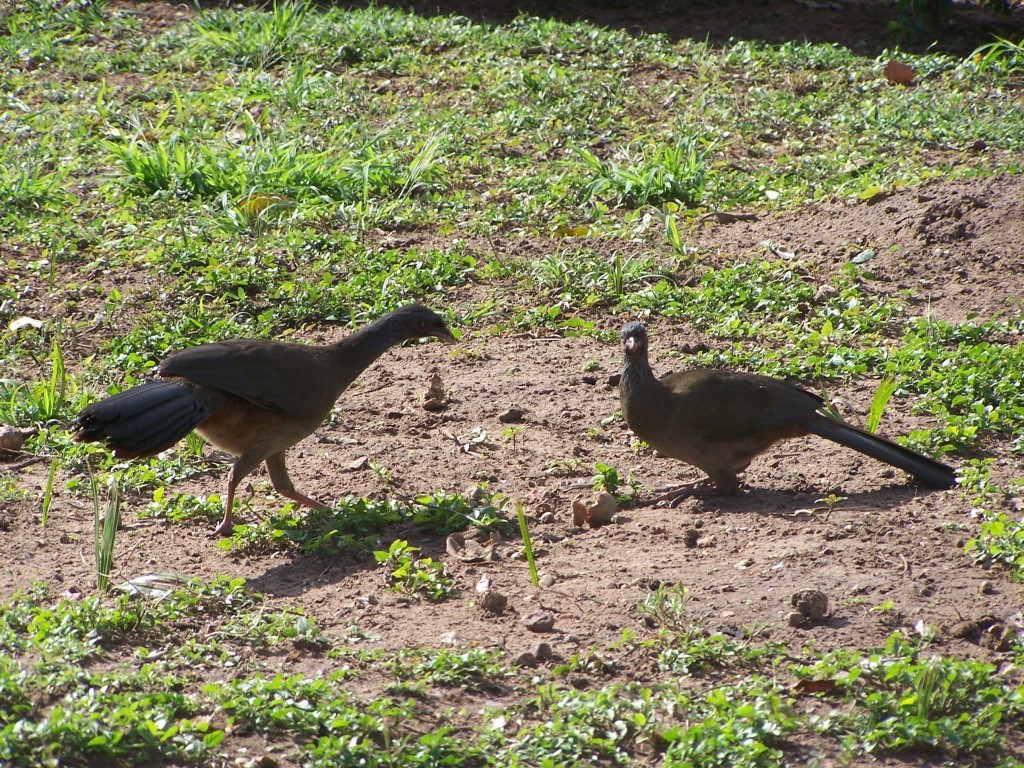
Then we passed the small airstrip and there were 2 mango trees just full of parrots-BF Amazons, Nandays and Maximillian Pionus!
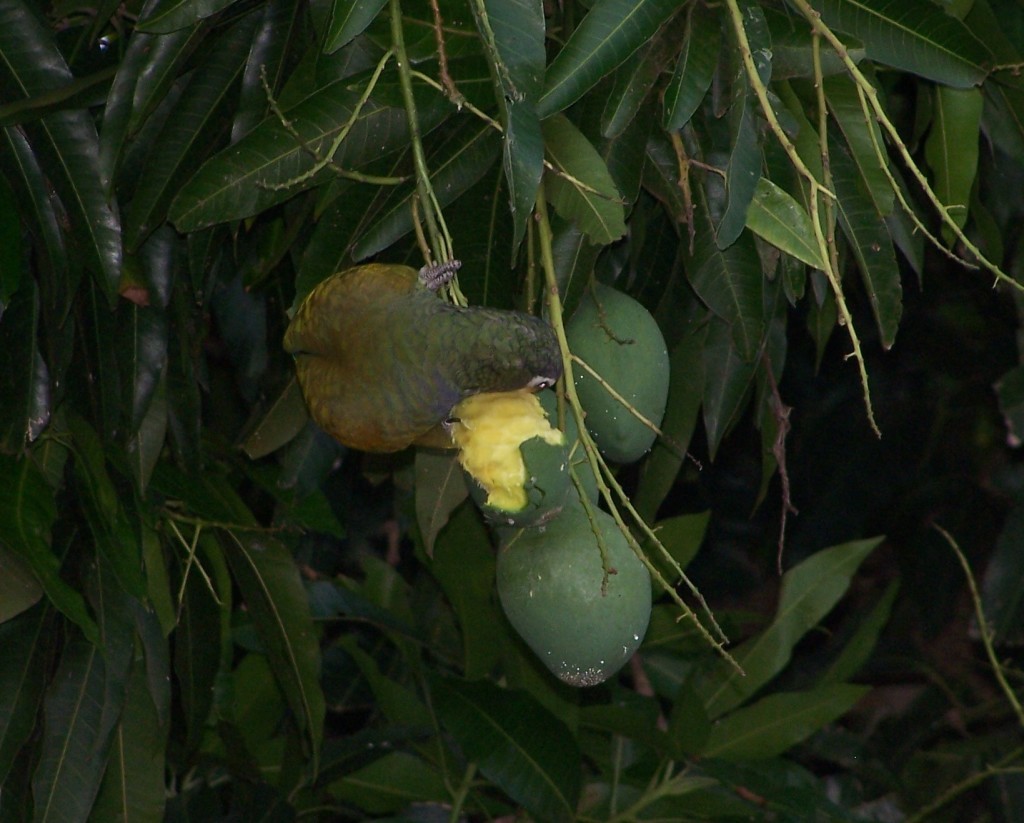
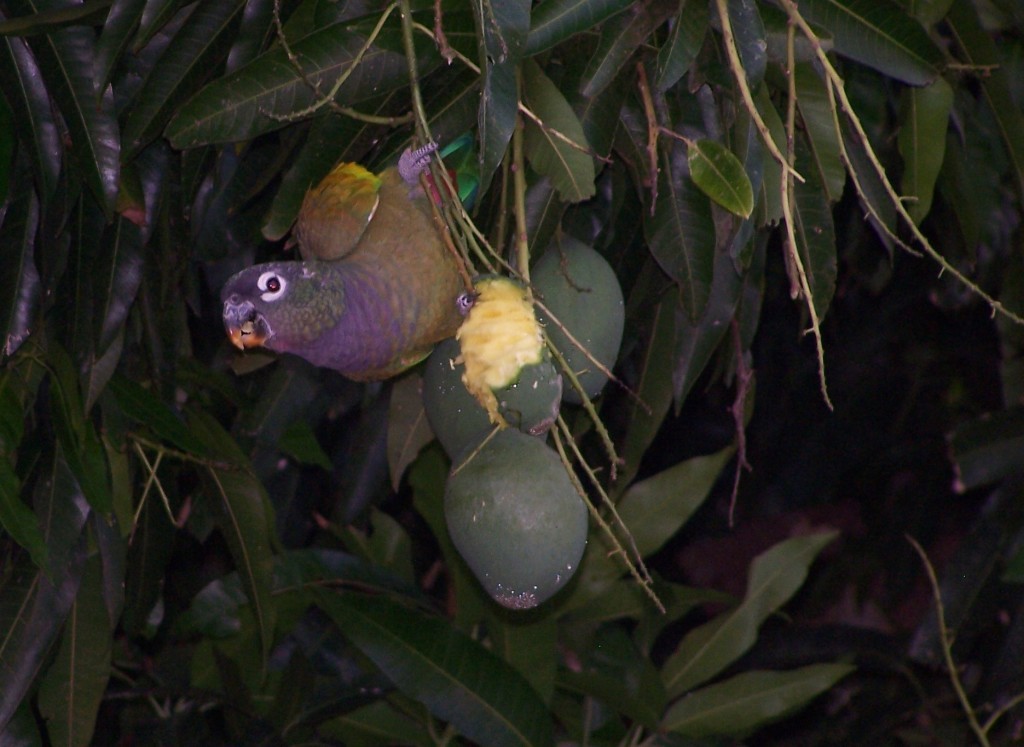
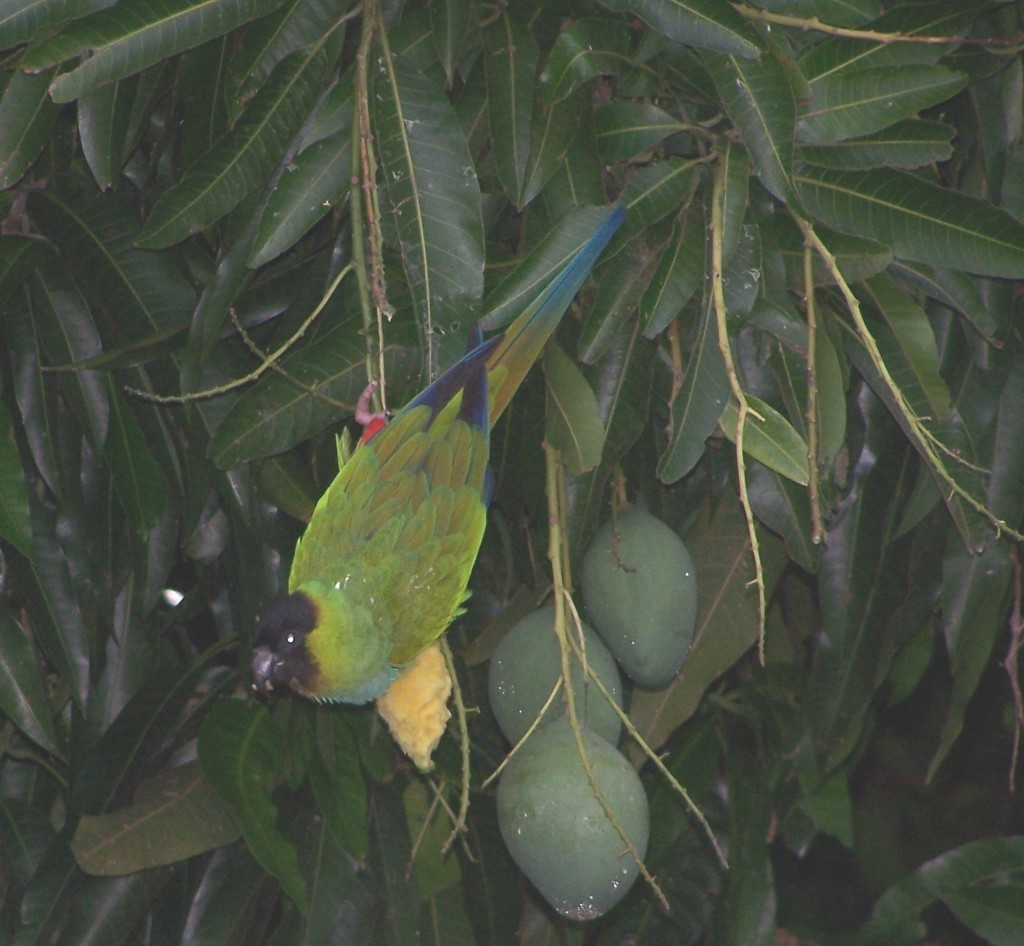
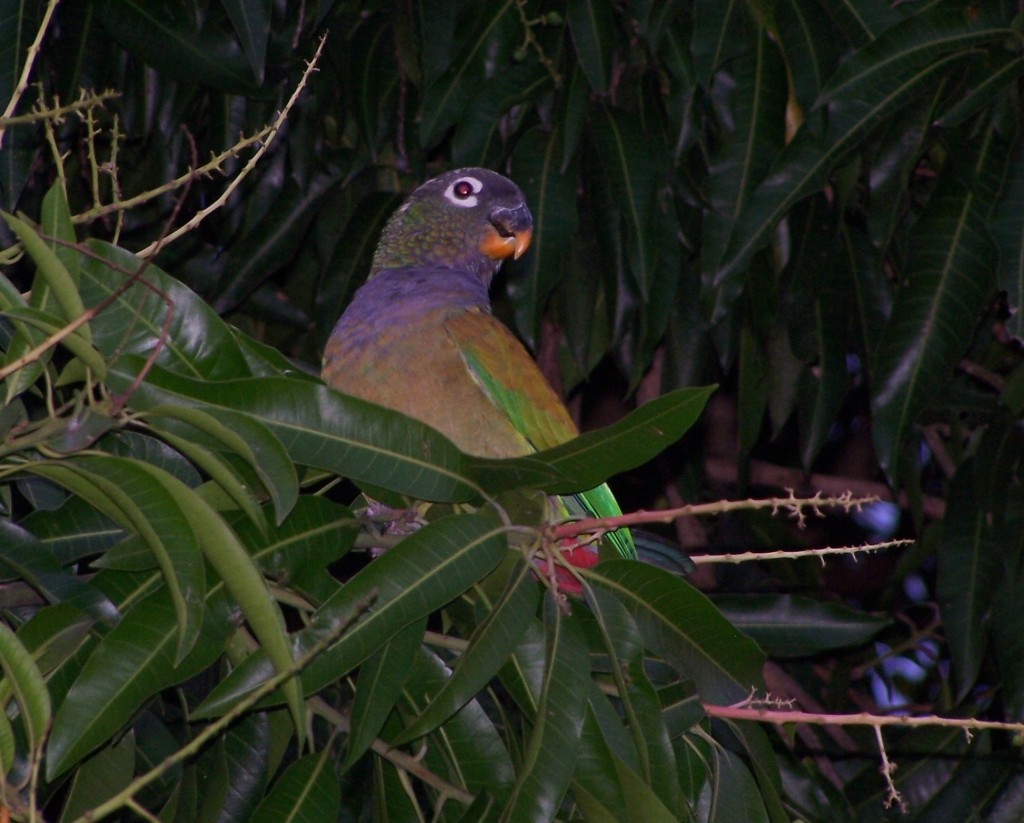
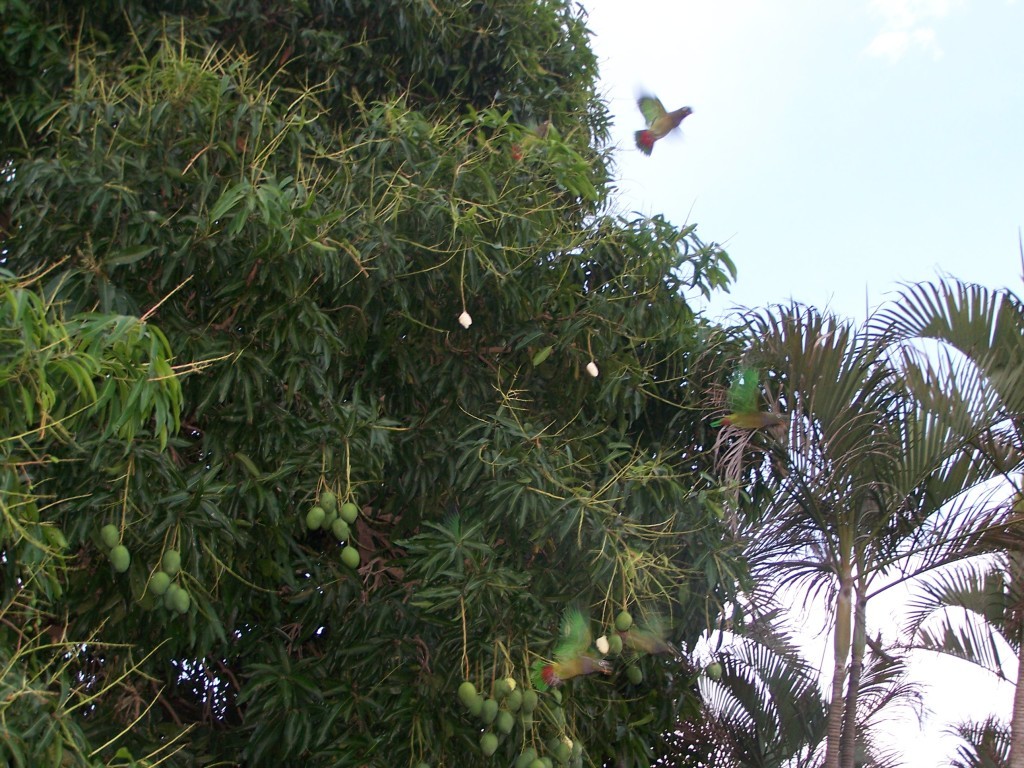
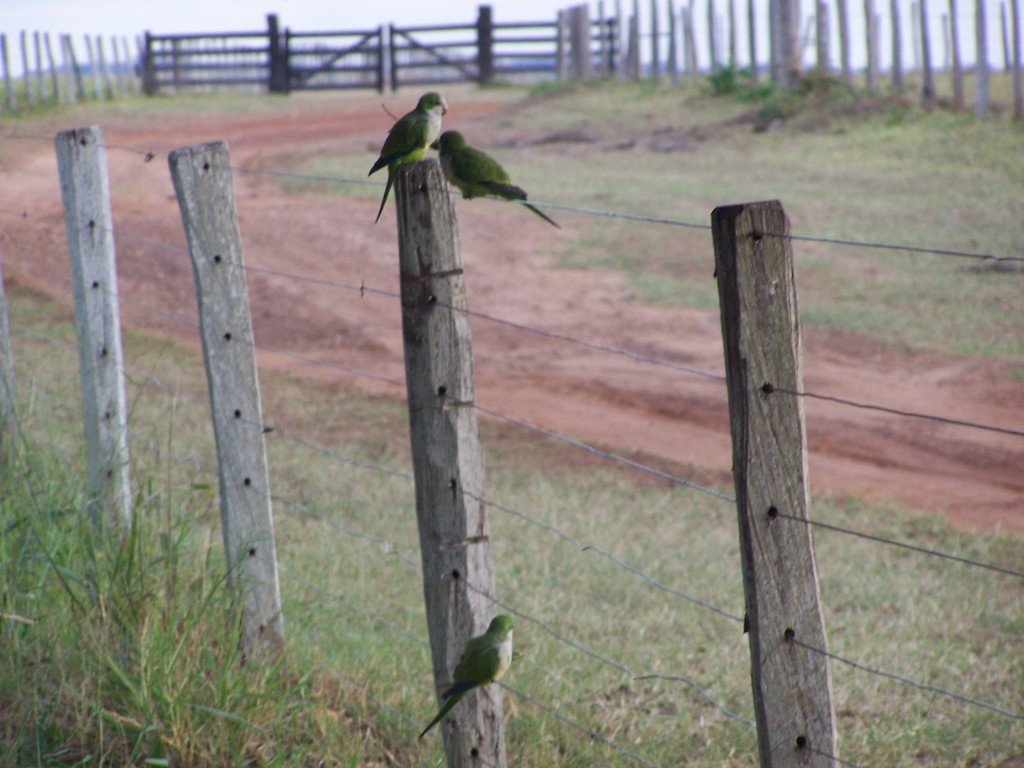
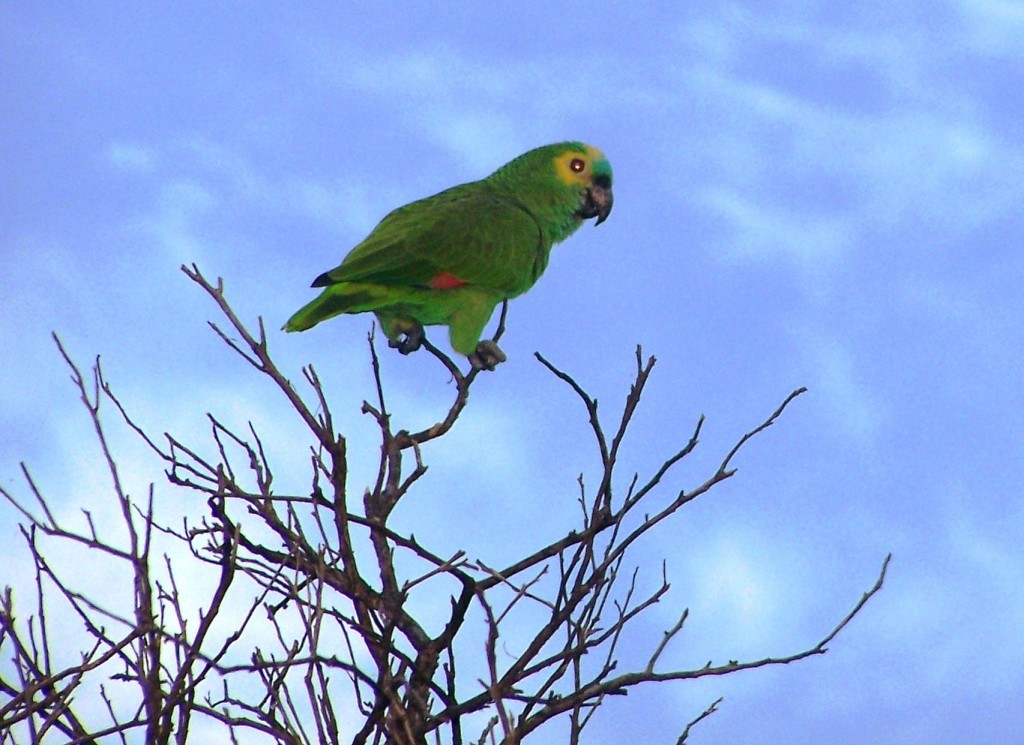
I flat out refused to leave the area, lucky there were no other tourists in the group! Ina and one of the guides biked on ahead but later on, he said he didn’t see anything else. The other guide finally managed to drag me away from the parrot trees kicking and screaming!
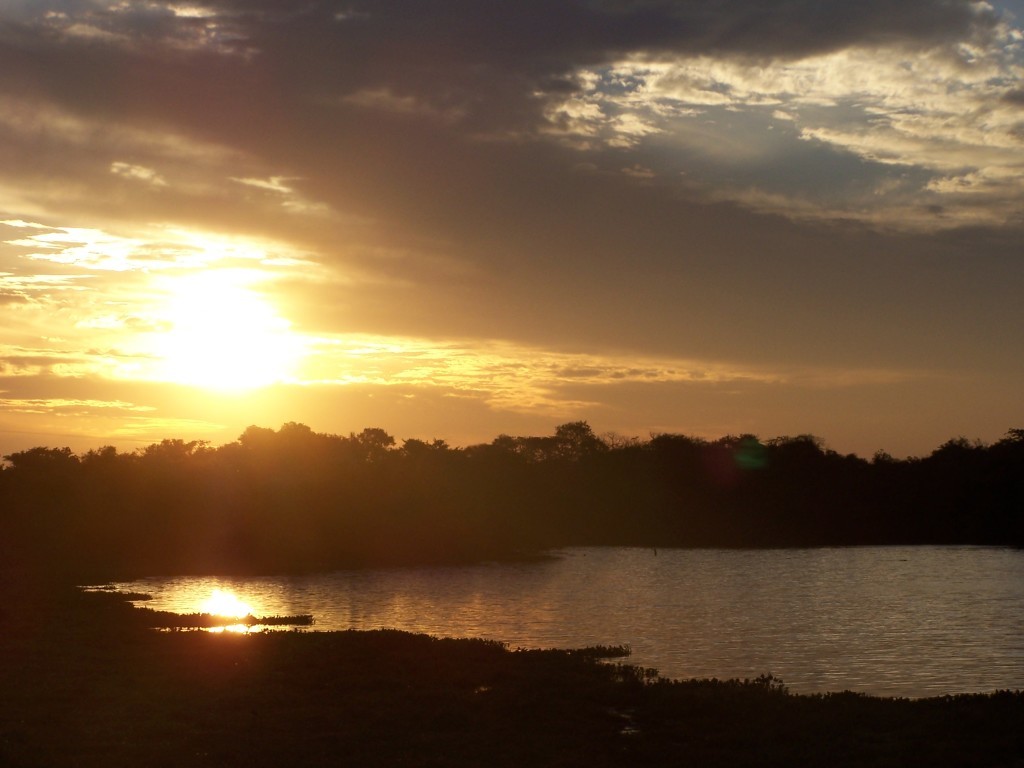
We reconfirmed with the people from Projecto Arara Azul for tomorrow. Cezar and one of the volunteers who spoke English-Julianne would be taking us with them on their normal daily routine. Neiva Guedes, the manager was out of the area so I didn’t get to meet her. Cezar runs the show in the field now with help of 3 volunteers.
Dinner was at 7:30, a nice buffet. Some of the other yellow group tourists had started to arrive, quite a mix-Americans, French, Belgians and Dutch. We jad a short night safari to see nocturnal animals which were VERY hard to spot and it was freezing cold! Then we made an early night so we could get up early for tomorrow.
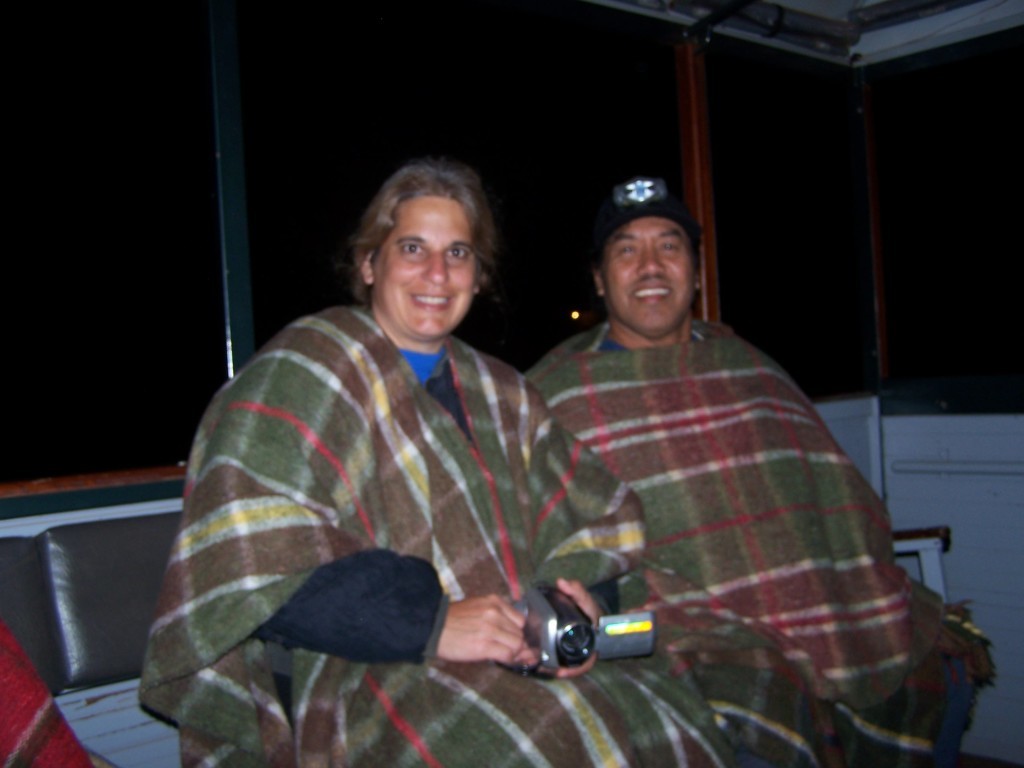
To be Continued…………………………..

